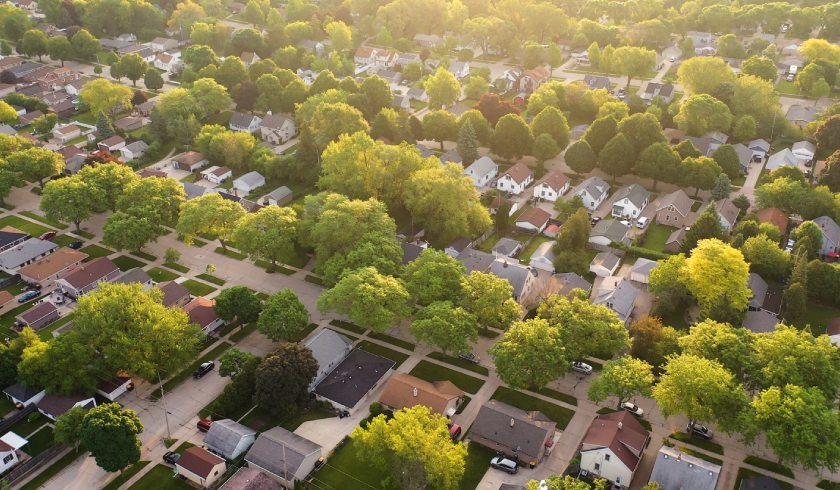How green areas can influence the worth of your property
Greenspace has been known to boost mental and physical health and wellbeing and, in turn, encourage premium prices for residential property in its close proximity.

The latest Property & Greenspace report by CoreLogic defines “greenspace” as land that is partly or completely covered with grass, trees, shrubs or other vegetation; or, in the context of cities, areas with parks, community gardens, cemeteries, school yards, playgrounds and vacant lots.
According to CoreLogic’s research director, Tim Lawless, apart from all-encompassing environmental and health benefits, living close to greenspace can boost the value of a property.
In fact, a Valuing Victoria’s Parks study conducted in 2013 found that properties immediately adjacent to parks in Melbourne saw home values increase by 5 to 7 per cent. Similar data was found for Perth in a McIntosh study a year later.
Although a lot of other factors are involved in determining the value of residential property, the research director said that a positive correlation does exist between home values and greenspace.
Ultimately, residents and authorities tend to place more value on a greenspace where it’s less accessible, according to him.
“Inherently, areas with higher population densities, such as the inner-city precincts and significant working nodes, show lower amounts of private greenspace due to a predominance of multi-unit dwellings, as well as smaller lot sizes for detached homes where the dwelling often comprises a larger portion of the land,” said Mr Lawless.
“Unsurprisingly, we can see a clearer relationship between private greenspace and housing price premiums [in these areas],” he noted.
For example, the densely populated Eastern suburbs of Sydney showed a far stronger relationship between private greenspace and dwelling values, with greenspace causing variations of 26.6 per cent in house prices and 20.6 per cent in units.
“The relatively high price of land and consequent scarcity of private greenspace in Sydney’s East and Inner City is likely to be a contributing factor,” Mr Lawless explained.
In comparison, the percentage of private tree cover (trees 3 metres or more in height) across the Greater Sydney SA2 areas was only able to explain 13.8 per cent of variation in house prices and 13.9 per cent of variation in unit prices.
Looking ahead, the research director believes that greenspace could be a stronger contributor to property values as Australia’s climate change strategies and domestic policy continue to evolve.
“For detached housing, as lot sizes progressively reduce, ‘smart’ designs that incorporate yard space are likely to become increasingly important and popular with buyers.
“For higher-density areas, the inclusion of public greenspace areas in the planning and design is also important, with projects that offer green amenity likely to stimulate greater demand and price premiums over those that have less of a connection with green areas,” Mr Lawless concluded.
Top 10 - Highest proportion of private greenspace
|
Area |
Average % private greenspace |
Average house sale price (2019) |
Average unit sale price (2019) |
|
Cobbitty - Leppington (South West) |
68.3% |
$762,823 |
$641,230 |
|
Austral - Greendale (South West) |
60.0% |
$1,456,156 |
|
|
Horsley Park - Kemps Creek (South West) |
53.1% |
$2,820,800 |
|
|
Mulgoa - Luddenham - Orchard Hills (Outer West and Blue Mountains) |
50.1% |
$1,418,762 |
$435,500 |
|
Rosemeadow - Glen Alpine (Outer South West) |
48.5% |
$618,186 |
$356,760 |
|
Camden - Ellis Lane (Outer South West) |
47.0% |
$854,407 |
$365,250 |
|
The Oaks - Oakdale (Outer South West) |
46.4% |
$941,984 |
|
|
Richmond - Clarendon (Outer West and Blue Mountains) |
45.7% |
$644,514 |
$464,102 |
|
Claymore - Eagle Vale - Raby (Outer South West) |
44.1% |
$598,922 |
$455,807 |
|
Pitt Town - McGraths Hill (Baulkham Hills and Hawkesbury) |
42.0% |
$1,047,458 |
$296,916 |
Top 10 - Highest proportion of public greenspace
|
Area |
Average % private greenspace |
Average house sale price (2019) |
Average unit sale price (2019) |
|
Heathcote - Waterfall (Sutherland) |
80.5% |
$912,937 |
$662,500 |
|
Berowra - Brooklyn - Cowan (North Sydney and Hornsby) |
78.1% |
$1,007,297 |
$738,500 |
|
Terrey Hills - Duffys Forest (Northern Beaches) |
75.0% |
$2,185,206 |
$585,000 |
|
Asquith - Mount Colah (North Sydney and Hornsby) |
66.3% |
$1,065,767 |
$660,995 |
|
Menai - Lucas Heights - Woronora (Sutherland) |
64.1% |
$998,368 |
$738,072 |
|
Bayview - Elanora Heights (Northern Beaches) |
57.8% |
$1,871,173 |
$1,718,333 |
|
Woronora Heights (Sutherland) |
57.4% |
$1,095,702 |
$976,250 |
|
Turramurra (North Sydney and Hornsby) |
57.0% |
$1,924,818 |
$993,229 |
|
Helensburgh (Illawarra) |
56.2% |
$941,500 |
$726,368 |
|
Manly Vale - Allambie Heights (Northern Beaches) |
52.7% |
$1,795,332 |
$772,182 Tags:
You need to be a member to post comments. Become a member for free today!
More from this writer: |
